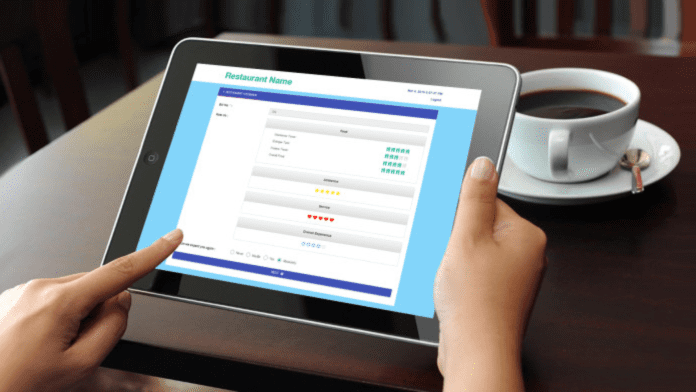In today’s digital age, technology has revolutionized almost every aspect of our lives, including the way we dine out and provide feedback to restaurants. Traditional methods of customer feedback, such as suggestion boxes and comment cards, have now been replaced with innovative and efficient systems that leverage the power of technology.
Customer feedback systems in restaurants are designed to capture the opinions, experiences, and suggestions of diners. These systems serve as valuable tools for gathering insights into customer satisfaction, identifying areas of improvement, and enhancing the overall dining experience. Traditional feedback systems include comment cards, suggestion boxes, and in-person feedback forms. However, with the advent of technology, digital feedback systems have gained prominence.
These systems leverage various channels such as online platforms, mobile apps, and social media to allow customers to provide feedback conveniently and in real time. The feedback collected through these systems is crucial for restaurants to understand customer preferences, address concerns, and make informed decisions to deliver exceptional service and culinary experiences.
Strategies to leverage technology for better customer feedback system
1. Adopting Digital Feedback Platforms: Restaurants can implement digital feedback platforms such as dedicated feedback apps or online survey tools to streamline the feedback collection process. These platforms allow customers to provide feedback conveniently through their smartphones or other digital devices.
2. Utilizing Social Media Listening: Restaurants can leverage social media monitoring tools to track and analyze customer feedback and reviews across various platforms. By actively listening to what customers are saying about their experiences, restaurants can gain valuable insights and respond promptly to both positive and negative feedback.
3. Implementing Real-Time Feedback Mechanisms: Technology enables real-time feedback collection, allowing restaurants to receive instant feedback from customers. This can be achieved through interactive tablets at tables, QR codes linked to online surveys, or mobile apps that facilitate immediate feedback submission.
4. Using Analytics and Data Visualization: Advanced analytics tools can help restaurants analyze the vast amounts of feedback data collected. By leveraging data visualization techniques, such as charts and graphs, restaurants can gain actionable insights into customer preferences, trends, and areas requiring improvement.
5. Engaging in Online Reputation Management: Technology allows restaurants to actively manage their online reputation by monitoring review platforms and responding promptly to customer feedback. This involves addressing customer concerns, expressing gratitude for positive reviews, and taking appropriate actions to resolve any issues raised.
6. Personalizing Customer Engagement: Technology enables restaurants to personalize their interactions with customers based on their feedback. By capturing customer preferences and behaviour data, restaurants can tailor their marketing efforts, promotions, and offerings to meet individual customer needs and foster stronger customer relationships.
7. Implementing Customer Relationship Management (CRM) Systems: CRM systems can help restaurants track customer feedback, preferences, and previous interactions, enabling a more personalized approach to customer service. By centralizing customer data, restaurants can provide a seamless and consistent experience across multiple touchpoints.
8. Embracing Artificial Intelligence (AI) and Machine Learning (ML): AI and ML technologies can analyze feedback patterns, sentiment analysis, and customer behaviour data to uncover valuable insights. This can assist restaurants in identifying trends, predicting customer preferences, and optimizing their operations to deliver exceptional dining experiences.
How Modern Customer Feedback systems Provide better Customer Feedback
1. Enhanced Accessibility and Convenience: Technology has made it easier than ever for customers to provide feedback to restaurants. With the rise of smartphones and mobile apps, customers can conveniently share their opinions and experiences in real time. Online platforms, social media, and dedicated feedback apps allow customers to provide feedback instantly and from anywhere, eliminating the need for paper-based forms and physical presence at the restaurant.
2. Improved Data Collection and Analysis: Technology has transformed the way restaurants collect and analyze customer feedback. With digital feedback systems, restaurants can gather vast amounts of data quickly and efficiently. Advanced analytics tools and algorithms can process this data, providing valuable insights into customer preferences, satisfaction levels, and areas of improvement. This data-driven approach enables restaurants to make informed business decisions and tailor their offerings to meet customer demands.
3. Real-Time Response and Issue Resolution: One of the significant advantages of technology in customer feedback systems is the ability to respond to feedback in real-time. Restaurants can promptly acknowledge customer concerns and address issues as they arise, demonstrating their commitment to customer satisfaction. With automated notifications and alerts, restaurant management can be instantly notified of negative feedback, allowing them to take immediate action to rectify the situation and prevent further dissatisfaction.
4. Personalized and Targeted Engagement: Technology enables restaurants to personalize their engagement with customers based on their feedback. By analyzing customer data, restaurants can gain insights into individual preferences and behaviours, allowing them to tailor promotions, offers, and experiences to meet specific customer needs. This personalized approach enhances customer loyalty and drives repeat business.
5. Online Reputation Management: Technology has given rise to online review platforms and social media, where customers can publicly share their experiences with a wider audience. Restaurants now need to actively manage their online reputation by monitoring and responding to reviews and comments. Online reputation management tools allow restaurants to track and analyze online feedback, ensuring they can address both positive and negative reviews promptly.
6. Continuous Improvement and Innovation: With technology-enabled feedback systems, restaurants can adopt a continuous improvement mindset. The availability of real-time data and customer insights enables them to identify trends, patterns, and areas of improvement. Armed with this information, restaurants can make data-driven decisions, refine their processes, and innovate their offerings to stay competitive in the ever-evolving restaurant industry.
Final Thoughts:
The impact of technology on restaurant customer feedback systems has revolutionized the way restaurants collect, analyze, and respond to customer feedback. The adoption of digital platforms, real-time feedback mechanisms, and data analytics tools has enhanced accessibility, convenience, and efficiency in gathering feedback. By embracing technology and leveraging its capabilities, restaurants can elevate their customer feedback systems to new heights, delivering exceptional dining experiences and staying ahead in the competitive food industry.





